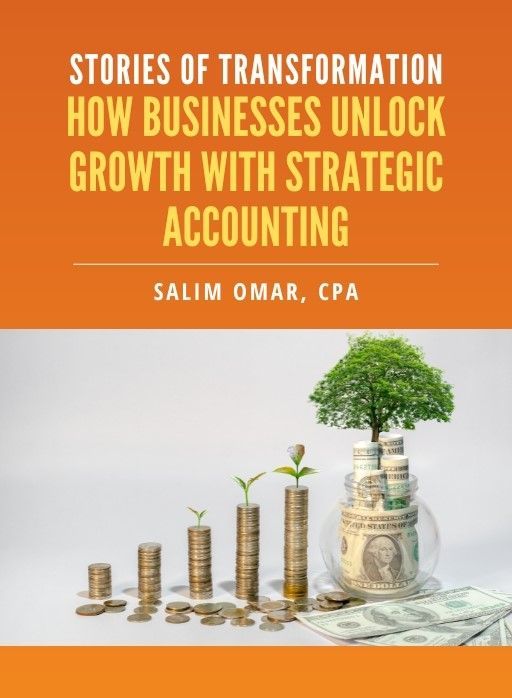From Numbers to Narrative: Turning Q4 Financials into Board-Ready Strategy
Spreadsheets matter, but by Q4, your
CFO or
CPA isn’t just closing the books—they’re shaping the narrative that guides board decisions and drives the strategy forward. Finance leaders succeed by translating results into strategy. Turning financials into a clear board narrative builds confidence, accelerates decisions, and aligns leadership on next steps.
Build the Narrative Before the Deck
Numbers without context create noise. Define the story’s purpose and arc before introducing data, as data storytelling best practices advise.
Treat metrics as pieces and the narrative as the lid—only then does the full image come into view.
What to Expect
A focused 7–10 day “data-to-story” sprint:
- Set the board’s priorities: growth, risk, liquidity, and runway.
- Fix the framing: separate past performance from the forward‑looking outlook.
- Establish a single source of truth: a consolidated P&L and unified cash view.
- Map storyline arcs (what went right, headwinds, opportunities).
Outcome:
A structured narrative, where numbers flow into strategy, not just tables.
From Data Dump to Boardroom Dialogue
Raw reporting obscures the signal with detail; strategic finance raises the altitude while preserving accuracy.
What to Highlight Now
- Revenue drivers: Show growth by product, segment, and channel, then call out wins.
- Expense levers: Separate controllable vs. structural costs to show flexibility.
- Cash position: Surface liquidity, debt headroom, and working capital moves.
- Forward lens: Tie forecasts to scenarios, not just linear models.
Q4 edge: A narrative that anticipates board questions before they’re asked.
Dashboards That Speak Strategy
Boards don’t need accounting minutiae—they need a GPS view of where the business is headed.
Essential Views
- Performance:
Growth vs. targets, margin movement, variance drivers.
- Cash: Forecast vs. burn, liquidity runway, sensitivity by key risks.
- Pipeline:
Revenue visibility by segment, probability, and timing.
- Scenario impact:
Headwinds (inflation, FX, and supply chain) modeled into outcomes.
Outcome:
A living dashboard that anchors the board’s discussion around “what’s next” instead of “what happened.”
Controls That Inspire Confidence
Governance doesn’t slow the story—it strengthens it. The right controls provide boards with assurance without slowing the finance team.
Must-Have Controls
- Consistency:
Same metrics, same definitions, period over period.
- Audit trails:
Traceable assumptions behind forecasts.
- Scenario discipline: Stress tests documented, not improvised.
- Access & review:
Role clarity on who prepares, reviews, and approves data.
Outcome: Fewer boardroom challenges over accuracy; more focus on decisions.
Year-End Storytelling: The 2025 Lens
Q4 isn’t the time for overhauling board packs. It’s the moment for surgical storytelling to win a position in the company for next year. Smart year-end tax planning woven into the accounting close ensures Q4 insights extend into 2026 strategy.
Execution Lines: Act Now vs. Park for Later
Act now (high impact, fast to implement):
- Consolidate metrics into one dashboard.
- Lock narrative arc tied to strategic priorities.
- Build scenario slides that answer top board concerns.
- Train presenters to tell the story, not read the slide.
Park for later (complex, design carefully):
- Full investor relations rebrand.
- Advanced predictive modeling with new data sets.
- AI-driven sentiment analysis for board materials.
Integration: Meet the Board Where They Are
Boards bring varied backgrounds—some live in numbers, others believe in strategy. Fit your narrative to both.
Best-Fit Approach
- Use clean, simple visuals—graphs over grids.
- Lead with the takeaway, then show the supporting data.
- Provide an appendix for detail, not in-deck clutter.
- Maintain a post‑meeting question log: capture board questions and the plan to address each at the next session.
Outcome:
A Board‑ready strategy—crisp on clarity, disciplined on detail—earns trust without exhausting attention.
Bottom Line
Numbers matter, but narratives move decisions. Q4 is the proving ground for finance leaders to steer not only the close but the company’s future. Lead with the story, frame the strategy, and give the board the clarity to act decisively.
Whether it’s financial storytelling, a board read, or Q4 planning, the result is constant trust, alignment, and momentum for 2025.
Ready to turn numbers into a narrative your board can rally behind?
📌 Book a 20-minute “Q4 Narrative Sprint”—leave with a storyline framework, a board metrics checklist, and a two-week rollout plan that elevates your financials into strategy.
Free eBook:
Stories of Transformation


Salim is a straight-talking CPA with 30+ years of entrepreneurial and accounting experience. His professional background includes experience as a former Chief Financial Officer and, for the last twenty-five years, as a serial 7-Figure entrepreneur.





